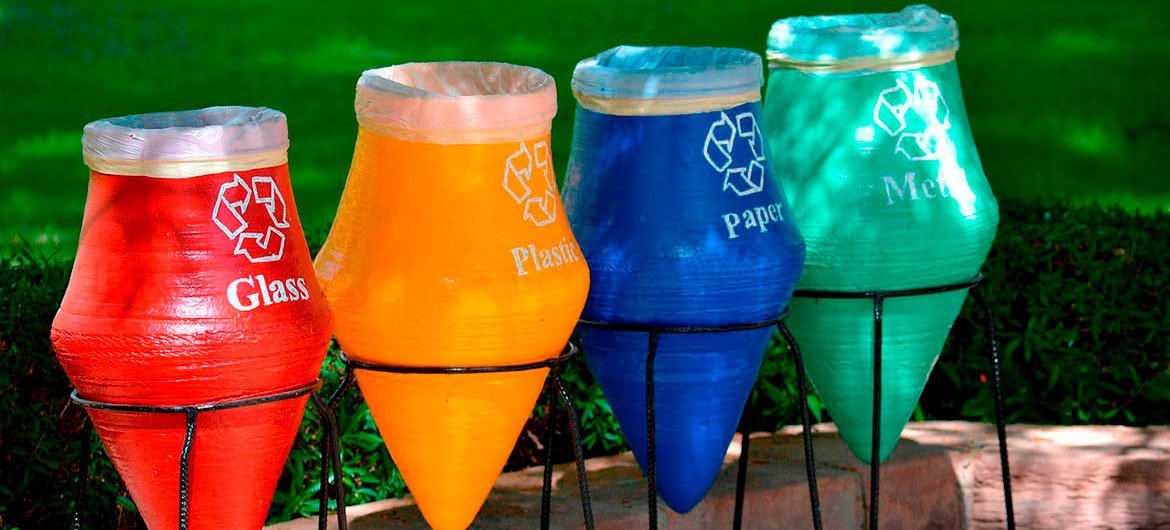How To Recycle and Keep Our Parks Clean
When you visit a park, you might not think about the factors that combine to make this environment pleasant and safe. A park that is clean and well-maintained offers a safe and enjoyable place for people to visit for hiking, picnicking, sporting activities, or just relaxing on an outdoor bench. Keeping parks clean can be every visitor's job, which helps contribute to a more welcoming park atmosphere. Recycling can be an important part of maintaining and using a park because it ensures that recyclable materials don't hit the landfill.
What is Recycling?
When you recycle, you stop many trash items from ending up in landfills, where they will sit for years. Labeling items as recyclable and interrupting the common process of throwing things away to be sent to landfills makes it possible to reuse these items again. Some recycled items, such as plastic bottles, can become new again, remade into new bottles to hold new beverages. Other recycled items, such as old tires, can be transformed into completely different materials to serve entirely new purposes.
Recycling involves picking out specific items and separating these things from regular trash. Generally, special recycling containers collect recyclable items such as plastic bottles, aluminum cans, and paper products. These recyclable items don't arrive at the landfill with the other trash. Instead, these items go to special facilities where they can be be made into new items.
Why is it Important?
Recycling has many benefits for the environment. By recycling, items don't go to landfills where they will sit and take up space for many years. Some items break down in a landfill faster than other items do. For example, a plastic milk jug will sit in a landfill for a long, long period of time. Plastic drinking bottles contain petroleum, which doesn't decompose in a landfill. Newspapers will typically decompose in about two to four weeks; however, Styrofoam cups will sit in a landfill without ever decomposing.
Although newspapers aren't a major threat to the environment because they break down so quickly, reusing these materials conserves natural resources. Wood, water, and minerals are examples of resources conserved with recycling. Conserving materials also reduces pollution because it's not necessary to use machinery to collect new materials. Reducing pollution helps reduce greenhouse gases, which can harm the environment. In this way, recycling helps save the environment for future generations.
Recycling also creates jobs for people, which helps the economy. When trash goes to a landfill, fewer jobs are required for this process. Processing recyclables and making new items out of them creates many more jobs for people to fill. These jobs are important and they typically pay well, which improves manufacturing industries throughout the nation.
What Happens to Recycled Items?
Recycling processes vary depending on the type of item recycled. Many recycled paper products arrive at paper mills, where they become new cardboard or newsprint. Some cardboard items will become new cardboard or even brown paper grocery bags. Recycled steel will travel to steel mills, where it will become new and different steel products. Recycling plants separate glass containers and bottles by color. These items will then be crushed and melted to become new bottles and containers. Manufacturers will melt down aluminum cans and then make them into new cans. Aluminum foil can also be melted down and then made into new aluminum foil. Plastic recycling involves sorting plastic containers depending on the type. Once sorted, plastic containers will travel to manufacturers that will transform the plastic into new materials.
What Can be Recycled?
By learning what materials are recyclable, everyone can contribute to this endeavor. All types of office paper, both white and colored, are recyclable. Additionally, newspapers, magazines, catalogs, junk mail, tissue boxes, cereal boxes, paper towel and toilet paper rolls, corrugated cardboard, and unwaxed food packaging are recyclable. All glass, metal, and aluminum food and beverage containers are recyclable. Plastic recycling includes containers with numbers 1 through 7 stamped on the bottom as well as plastic food and beverage containers.
When visiting parks in your community, look for recyclable waste containers and use them if you need to throw recyclable items away. Generally, you will see two containers for trash, one for items that will travel to landfills and another for recyclable items. Always place recyclable items into the recycling container. Whenever possible, try to carry your trash out of the park, too. This reduces the maintenance required to keep parks clean.
- Improving Parks and Other Community Facilities
- Single Use Coffee Cup Reduction
- Doing Your Bit
- The Recycling Process After Collection
- What Happens To Recycled Materials
- The Ultimate Recycling List
- When in Doubt, Recycle!
- Why Is Recycling Important
- Recycling in National Parks
- Working Together for a Healthy Environment
- Recycling Tires
- Recycling Guide
- How to: Clean up a Public Space
- Don't Trash The Planet
Find more about the author: Kim Hart


